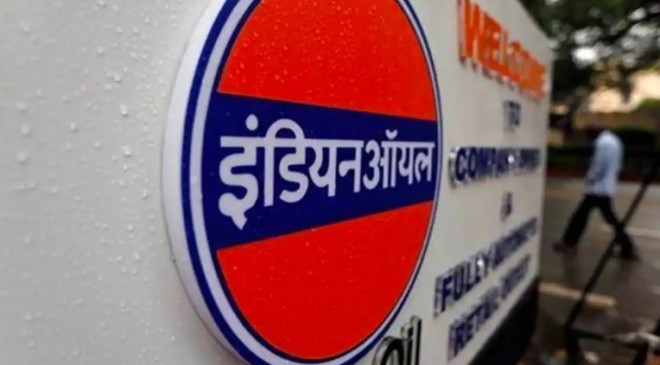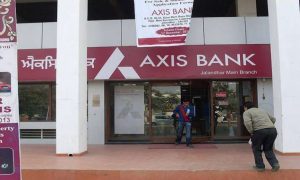Given the volatility in international crude oil prices, Moody’s Investor Service expects the profitability of India’s oil marketing companies (OMCs) — Indian Oil Corporation (IOC), Bharat Petroleum Corporation (BPCL), and Hindustan Petroleum Corporation (HPCL) — to weaken if oil prices are at elevated levels as the three companies will have little room to pass on the higher costs to consumers in view of the impending 2024 Lok Sabha elections.
Read More: Air India reveals first look of Airbus A350, getting ready to be delivered by year-end
“The OMCs’ marketing margins — the difference between their net realised prices and international prices — have already weakened significantly from the high levels seen in the quarter ended 30 June 2023. Marketing margins on diesel turned negative since August while margins on petrol have narrowed considerably over the same period as international prices increased,” Moody’s said in a recent report. It added that to some extent, the slump in marketing margins has been mitigated by strong refining margins — the difference in the value of all refined products coming out of a refinery and the value of crude processed to derive those products.
While Moody’s expects the OMCs operating performance to weaken over the next few quarters if oil prices remain at elevated levels, the companies’ earnings for financial year 2023-24 (FY24) are still likely to be strong, thanks to a spectacular show in the April-June quarter when they gained from strong marketing and refining margins.
Read More: Tata Steel Arm TCIL Gets Rs 40 Cr Tax Penalty Notice
“The three companies’ fiscal 2024 earnings will remain strong and higher than historical levels, even if crude oil prices remain at current levels of $85/bbl-$90/bbl in the second half of fiscal 2024. This is attributable to the OMCs’ exceptionally strong earnings in 1Q (April-June of) fiscal 2024. The three companies’ EBITDA (earnings before interest, tax, depreciation and amortisation) in the first quarter alone was close to their average annual EBITDA for the last few years,” Moody’s said.
Last week, Nomura had also cautioned that the spurt in international crude oil and fuel prices was leading to an under-recovery of over Rs 7 per litre for the OMCs on diesel and petrol sales, adversely impacting the profitability of the OMCs, which have a cumulative market share of around 90 per cent in India’s fuel retail sector. Under-recoveries refer to the difference between the retail price and the international price of the fuel.
As per the pricing methodology followed by the OMCs, petrol and diesel prices should be revised daily based on the 15-day rolling average of international benchmark prices. However, the companies have not revised prices since early April of last year, when global crude oil and fuel prices had surged in the aftermath of Russia’s invasion of Ukraine.
With Assembly elections in five states around the corner and Lok Sabha polls likely in a few months, analysts and industry insiders say that it is unlikely that the OMCs would hike prices of diesel and petrol. Although petrol and diesel prices are deregulated, the three OMCs in the past have kept fuel prices frozen around key elections, particularly if the global rates dictated a price increase.
After incurring heavy under-recoveries for much of last year, the OMCs were in the process of recouping their accumulated losses from 2022-23 (FY23) in the current financial year. There were indications from the government and the OMCs that they could revert to daily price revisions soon as most of their last year’s accumulated losses had been recouped. Till a couple of months back, there was anticipation that petrol and diesel prices could soon see a cut.
However, with international oil prices and fuel spreads, or margins, having risen substantially leading to incidence of under-recoveries again, the resumption of daily price revisions in line with global rates and reduction in fuel prices may only be a distant possibility. In such a scenario, fuel price cut can only be achieved if the government cuts taxes on the petrol and diesel, like it did on two occasions over the past couple of years, or the OMCs decide to bear deeper losses at the government’s behest. On the other hand, if oil prices and fuel spreads fall significantly, it would enable a reduction in fuel prices.
Global crude oil prices had been firming up for a few months prior to September, which saw a sudden spurt after major oil producers Saudi Arabia and Russia surprised the world by announcing an extension of their voluntary supply cuts–totalling 1.3 million barrels per day (bpd)–till the end of 2023. The two oil-rich countries are leading the cartel of major oil producing nations in efforts to prop up crude oil prices by reducing supply despite expectations of a rise in global oil demand.
Although global oil prices have seen notable correction over the past few days due to demand-side concerns, volatility persists and it is difficult to predict the trajectory going ahead. Moody’s does not anticipate high oil prices to sustain for too long as global growth weakens. Global benchmark Brent crude is currently trading close to $85 per barrel. At this year’s peak in September, it had touched $97 per barrel.
Moody’s does expect international prices of fuels to soften in subsequent quarters over demand concerns, particularly emanating from apprehensions of an economic slowdown in China, even as supplies are likely to go up as a number of refineries come back online after scheduled maintenance shutdowns. “Although a smaller gap between international and domestic prices will reduce marketing losses for the OMCs, their overall profitability will remain weak as retail selling prices will likely remain unchanged,” Moody’s added.





































